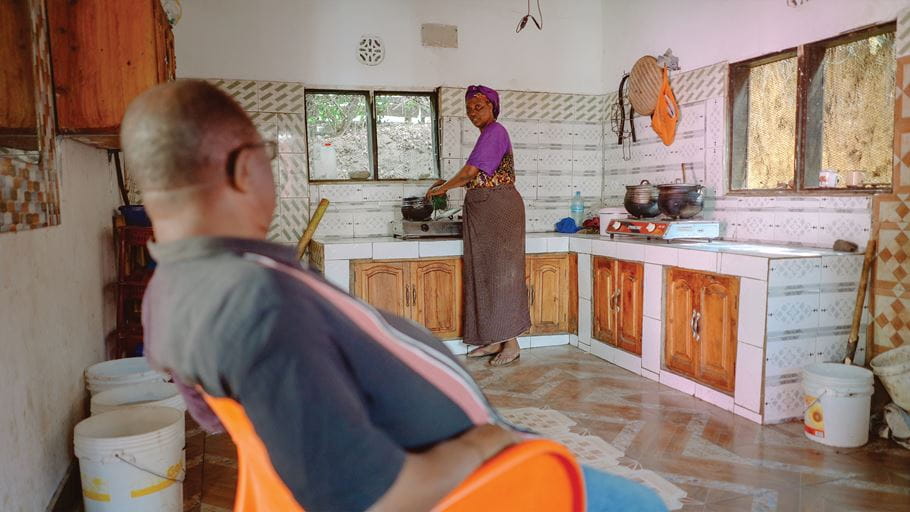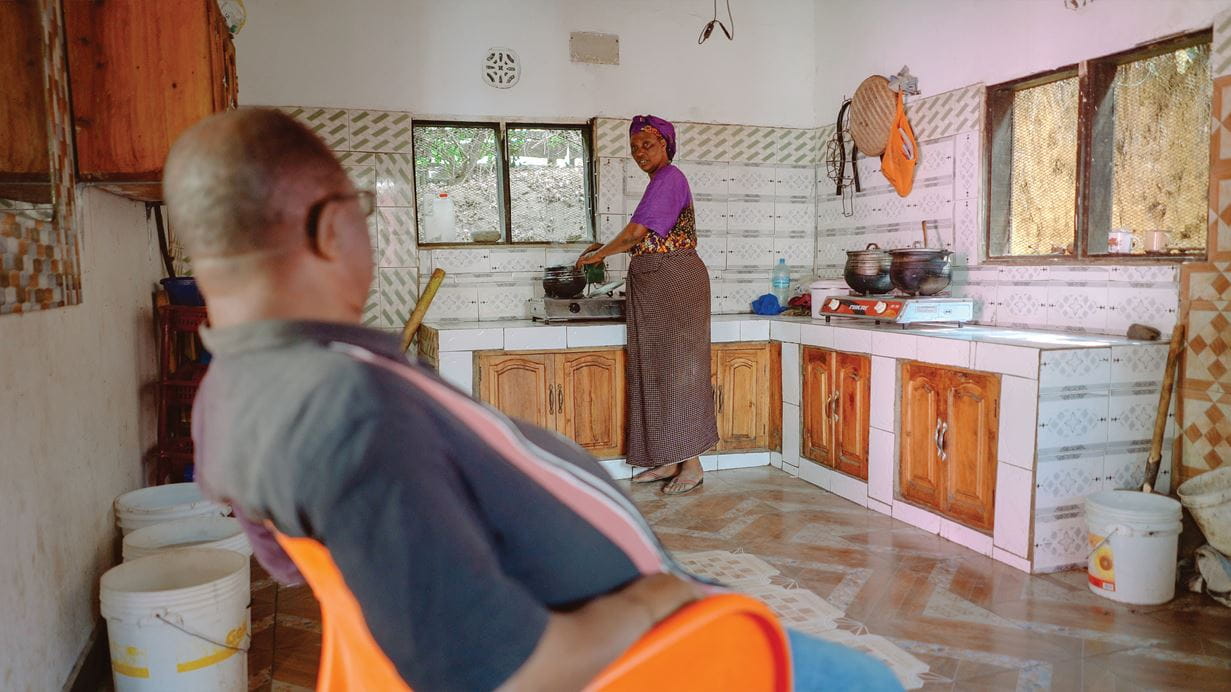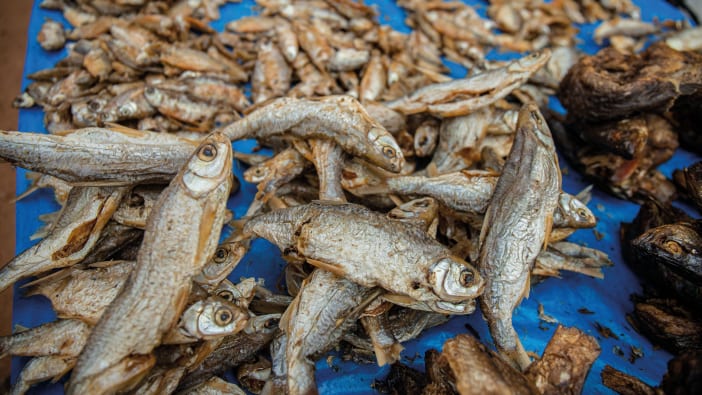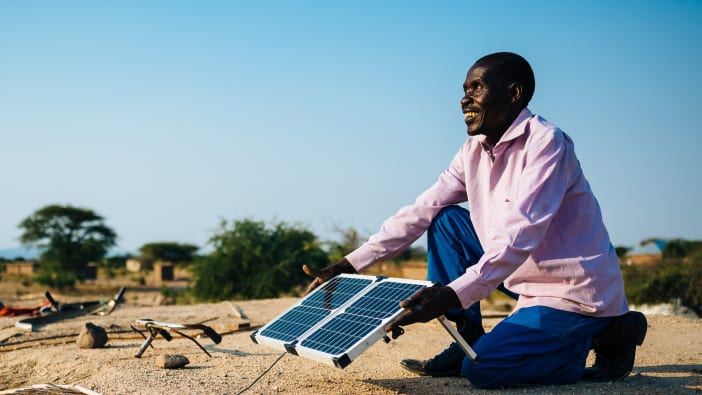We travelled along dusty, bumpy tracks towards a remote farm in northern Tanzania. I had first visited the farm three years before, just after the construction of the family’s biogas digester, and I was eager to see if it had made a difference to family life.
Biogas digesters turn organic matter, such as animal manure and kitchen waste, into a clean fuel that can be used for cooking. The biogas can replace, or significantly reduce, reliance on other fuel sources such as wood or charcoal.
Smoke-free kitchen
We sat on the veranda overlooking the farm and Pastor Julius spoke with me about how well the biogas digester was working. Marsha, his wife, served us tea, freshly made on a stove powered by biogas from the digester.
Marsha showed us around her kitchen and I was struck by how different it was to my previous visit. Then, the walls had been black with soot and an open fire had filled the kitchen with eye-watering smoke. Now it was clean and tiled with a raised work surface.
‘Biogas is better than firewood because it helps us to simplify our life and shorten the amount of time needed for cooking,’ said Marsha. In Tanzania, some women and children spend four hours a day collecting firewood. This adds up to 1,460 hours (61 days) over a year. Another thing that is really good is now my husband comes into the kitchen and we can talk about the family,’ Marsha continued. ‘My husband does not like smoky kitchens, but now I can talk to him while I am cooking.’
Pastor Julius explained that he used to stay out of the kitchen because the smoke made his eyes water and in Maasai culture it is shameful for an elder to be seen crying. Now he enjoys spending much more time in the kitchen with his wife and the rest of the family.
It was quite an emotional moment as we stood chatting near the biogas stove while Marsha cooked a pot of green vegetables for us to eat later.











